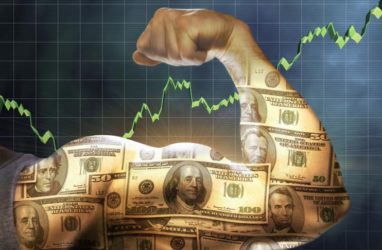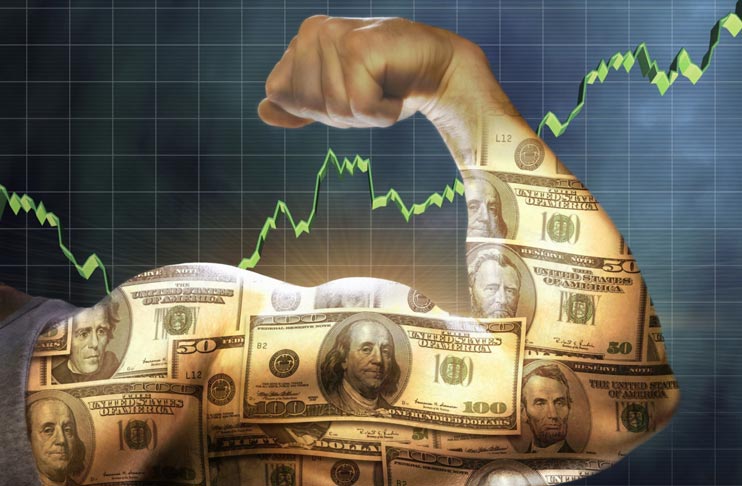
USA Federal Reserve System – FED global as expected by global markets increased interest rates up to 25 points, and gave the hint that the interest rate’s increasing would continue in 2017 as well. Especially developing markets are foreseen to be effected by this decision that started Strong Dollar term.
With Federal Reserve System – FED’s raising interest rates up to 0.25 points, roles in the global markets have been changed. While gold losing value drastically, Dollar increased in value against local currencies in developing markets. How will Turkey that can’t hinder Dollar and Euro’s gaining value against TL, be affected by FED’s decision of increasing interest rates? What can this rate affect from investments in long terms, providing outside borrowings to hot money flow?
FED’s Federal Open Market Committe’s (FOMC) decision of increasing the interest rates after one year was decided unanimously in December meeting. Because of ‘Work force market situation with developments and expectations in inflation’, FED raised interest rates up to 0,50-0,75% by increasing 0.25 points. FED also announced that in 2017 there can be 3 more interest rate increasings.
Having a 103 years of history, Federal Reserve System-FED is considered to be one of the most important financial players of the global market. Being responsible for USA’s Money politics as well as printing and distributing, FED’s balance-sheet size has reached to 4,593 trillion Dollars since March 2016. Raising USA’s growth expectancy for this year from 1,8 to 1,9 rate, FED revised 2017 growth expectancy from 2% to 2,1%. FED also foresees 2% growth for 2018 and 1,9% growth for 2019 in USA. Not making a change in core inflation expectancies, FED announced 1,7% at the end of 2016; 1,8% at the end of 2017 and 2% rate at the end of 2018 and 2019.
Unemployment expectancy rate for 2017 pulled down from 4,6% to 4,5%. In 2018 and 2019 the unemployment rate is expected to be around 4,5%. These positive reviews towards USA economy cause the interest rate increase occured at the end of 2016 and 3 more increases in 2017 as well. The fact that newly selected president Trump’s economical and diplomatic politics have not been cleared yet and his harsh accusations to FED president Janet Yellen during the campaign, make it difficult to have predictions for USA. In this new term where it focuses on strengthening its local market and economoy, USA is said to cut down the cash flow. On the other side, as a part of USA’s coming out of stagnation and developing again, FED’s rates are expected to be increased regularly.
Not making an interest rate increase in 2008-2015 terms; FED made the latest decision of interest rate increasing in December 2015. As can be remembered, starting in 2008 in USA and affecting all developed economies; financial crisis had reached a power that turned all economies upside down; by beginning with mortgage system and enhancing to banking.
FED’s increase decision in December 2016, in the simplest term, means reclaiming Dollar in outside the country. Reclaimed from global markets, this money is expected to get out of developing countries and economies. Among these markets, Brasil, Russia, Turkey and South Africa are in the first rank.
Developing Economies May Have Difficulties in Finding Money
Turkey attracting Dollar abundantly, easily and making its economical development; during the years when FED didn’t increase the rates; is among the countries facing the most difficulty in the new term. Even with the announcement of increasing Dollar which tends to increase already, caused 3,51 TL value increase. USA’s rate increase puts countries’ growth and exchange rates in a difficult position; since it increases the financial cost of developing countries with a high indebtness levels. Having gross external dept of 411,5 billion dollar since March 2016; Turkey’s national income’s rate to dept was determined as 58,1%. In the same period, while Turkey’s external dept stock was 257,2 billion dolar; the stock’s rate to national income was 36,3%.
Some experts think that on the basis of Turkey’s sustainable current deficit, dept load and budgetary deficit; FED’s rate increase’s negative effect can be reduced. Along with that, not being able to wipe out its need for external financing; this is accepted as an increase rate that can change Turkey’s internal economical dynamics very drastically. Also, as the only institution that holds Turkey in the investible country status; FITCH will announce its new decision on the 27th of January. This date is anticipated very curiously in terms of Turkey’s financial view and future.


